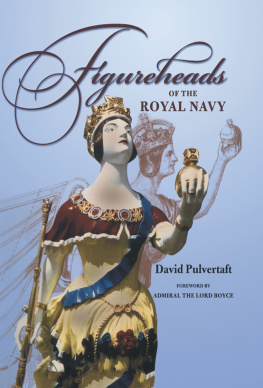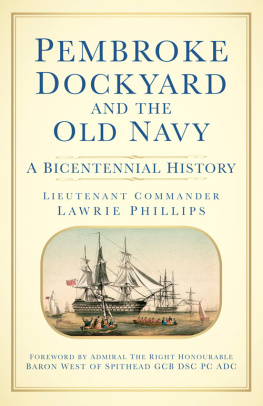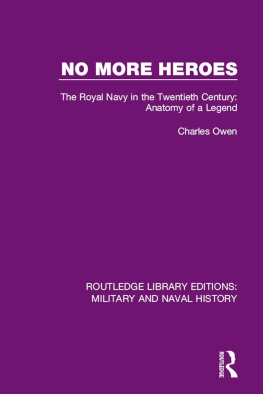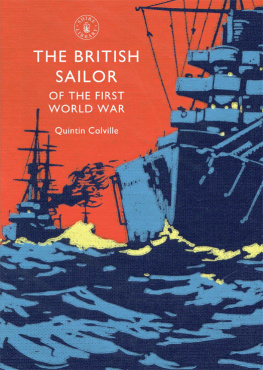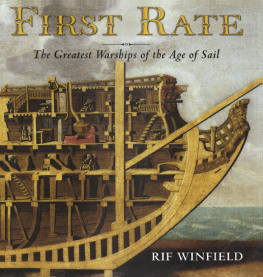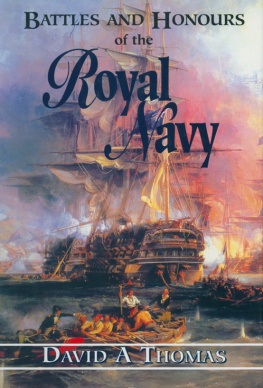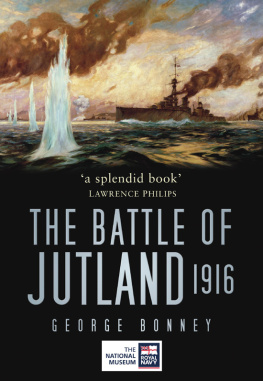David Pulvertaft
THE LORD BOYCE
Frontispiece: Courtesy of the National Museum of the Royal Navy
Copyright David Pulvertaft 2011
First published in Great Britain in 2011 by
Seaforth Publishing
An imprint of Pen & Sword Books Ltd
47 Church Street, Barnsley
S Yorkshire S70 2AS
www.seaforthpublishing.com
Email info@seaforthpublishing.com
British Library Cataloguing in Publication Data
A CIP data record for this book is available from the British Library
ISBN 978 1 84832 1014
All rights reserved. No part of this publication may be reproduced or transmitted
in any form or by any means, electronic or mechanical, including photocopying,
recording, or any information storage and retrieval system, without prior
permission in writing of both the copyright owner and the above publisher.
The right of David Pulvertaft to be identified as the author of this work has been
asserted in accordance with the Copyright, Designs and Patents Act 1988
Typeset and designed by Roger Daniels
Printed and bound in China
CONTENTS
I STARTED taking an active interest in the figureheads of the Royal Navy about a year before I left the service in 1992 as I realised that, once retired, I could no longer assume the easy access to the naval establishments and royal dockyards that I had enjoyed in the past and it was there that many of the carvings resided.
With the foundation of my database being the figureheads still under naval ownership, I investigated the collection of the National Maritime Museum (NMM) the largest in the land where the then Curator of Antiquities, Caroline Roberts, allowed me to make copious notes from their records and then to meet the figureheads themselves, most of which were in store and only available by appointment. I am indebted to her for such a start.
Through my membership of the South West Maritime History Society, the Plymouth Naval Base Museum Trust and The Society for Nautical Research (SNR) I have acquired many good friends who have in their own way encouraged my research and provided all sorts of clues to where I might find new examples of these fascinating carvings. Dr Michael Duffy of the University of Exeter provided an academic slant, Lieutenant Commander Lawrie Phillips was ever forthcoming in offering snippets that came his way and figurehead historian Richard Hunter has proved to be a long-standing colleague with whom I have been able to explore the more difficult identities and who has always been most generous with items from the Richard Hunter Archives.
Help from the many contacts who work in Portsmouth has been eased by my membership of the Friends of the Royal Naval Museum and HMS Victory with Matthew Sheldon and Richard Noyce, now of the National Museum of the Royal Navy, deserving special thanks for their help over the years. Jenny Wraight, the Admiralty Librarian, has been a mine of information; first when the library was in Old Scotland Yard in Whitehall and more recently from her desk in the Portsmouth Naval Base as a member of the Naval Historical Branch.
In preparing for this book, my thanks go first to its publisher, Robert Gardiner, who encouraged me to dig deep into my own archives to select a suitable cross-section of subjects and images to do justice to this rather specialist subject and then suggested that I should include what were the uncharted waters, for me, of ship plans and ship models. To enter these fields of expertise was somewhat daunting and I make no attempt to be authoritative on either subject but simply to show where each provides figurehead evidence. I was warmly welcomed to the Brass Foundry at Woolwich by the NMMs Curator of Historic Photographs and Ship Plans, Jeremy Michell, and his colleague Andrew Choong and given every assistance to search their vast collections. The NMMs Curator of Ship Models, Simon Stephens, was equally forthcoming in his area of expertise, not only guiding me through the collection at a time when much of it was being prepared for its move to Chatham, but also pointing me in the direction of other collections of ship models where further figurehead evidence might be found.
In the last few months I have had to make contact with a large number of curators, librarians, owners and copyright holders to check that the figureheads that I had recorded many years ago are still where I first met them, to discover details of model collections, to seek permission to use certain images and to explore many other details. To all of these I offer my grateful thanks and in particular to the present NMMs Curator of Artefacts, Barbara Tomlinson, who has helped me update my earlier records from their collection and the Editor of The Mariners Mirror, Dr Hugh Murphy, for permission to use the 1913 image of the fire-engine house at Devonport. My special thanks go to Richard Blundell who owns the Dickerson Archive in Australia and allowed me to examine the whole collection when I last visited that country a year ago. He has been enormously generous in providing the scans that illustrate this previously unpublished source and answering the many questions that have resulted.
It has been reassuring to have my manuscript read by two of the maritime historians whom I have come to know and admire over the years, Dr Michael Duffy and Robert Gardiner. Each of them gave me sound advice that I was only too happy to follow and, while I thank them for this, any remaining errors are entirely mine.
Finally, I thank my wife, Mary Rose, for encouraging my interest in figureheads for the last twenty years and for remaining totally supportive, despite my almost complete dedication to the books creation over the last twelve months!
F OR more than three centuries the bows of British warships were adorned with an elaborate decorative device, often in the form of a carved human or animal figure. These were emblematic of the ships name, symbolized the fighting spirit of the Navy, and even reflected the political ideals and beliefs of the country. Sometimes large and always eye-catching, the artistic value of figureheads meant that many were retained when the ships themselves were sold or broken up although, sadly, the later history of such collections was often one of neglect and dispersal.
In recent years there has been a revival of interest in these potent symbols of Britains maritime heritage, much of it due to the painstaking work of Rear Admiral David Pulvertaft. He has identified and catalogued all surviving figureheads of the Royal Navy which has encouraged a growing appreciation of their value but in this book he has carried his research to a new level. For the first time he describes the process by which the Admiralty commissioned such work, analyses how the ship names were translated into sculpture, and looks at the lives and businesses of the carvers themselves. He has tracked down extant design drawings, some from as far away as Australia, and studied models and ship plans as objective records of figureheads that have themselves long since disappeared. All these sources are listed in a directory of immense reference value that will surely form both the starting point and inspiration for further research.

